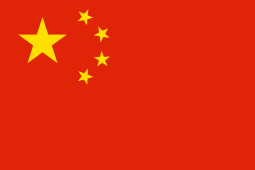![]()

September 11, 2020
What is IP Addressing and How Does it Work?

IP addressing refers to assigning a 32-bit binary numerical label to all the devices connected to a network that communicates to the internet. The 32-bit IPv4 address is subdivided into 4 x 8-bit segments, which are known as octets.
As only a few users work with 32-bit IPv4 addresses, the IP address is generally expressed in the dotted-decimal format. Here, each octet is assigned to an equivalent decimal number and the four decimal values are separated using periods. Typically, the eight binary bits can represent any number from 0 to 255. This means that each of the parts of the dotted-decimal in an IPv4 address can be any decimal from 0 to 255.
Although IP addresses are broken into four parts using periods, the first two segments combine to denote the network ID, while the last two represent the host ID. However, not all IPv4 addresses have the same format. For instance, sometimes, only the first one could be the network ID while the other three will be the host ID or vice versa. In a network that has multiple devices connected, the network ID in the IP address will be the same while the host ID will change from device to device.
The segments in the IPv4 address vary as per the address Class allotted to the network. Class A IPv4 addresses will have the first 8 bits reserved for the network ID while the rest 24 bits will denote the host ID. Class B IPv4 addresses will use the first 16 bits to represent the network ID and the last 16 bits for the host ID. The first 24 bits of Class C IPv4 addresses, on the other hand, will denote the network ID while the remaining 8 bits represent the host ID.

To assign an IP address, the Class A format supports up to around 224 hosts. On the contrary, a Class C network can support only up to around 28 hosts. Yet again, many more combinations of network IDs can be used in the Class C format to support more hosts. Generally, if the 32-bit binary address begins with a 0, then it is in the Class A format, while the ones starting with 10 are Class B addresses. Class C format will have the first 32-bit binary address starting with 110.
Theoretically, the internet can accommodate only 127 Class A networks. However, each of the networks can have up to 17 million hosts. Class B networks, although not as large as Class A networks, can have about 65,000 hosts per network. Class C networks are a lot smaller and can support up to 254 hosts only, which is why there are more than 2 million Class C networks on the internet.
Recent Posts
Archives
- October 2024
- September 2024
- August 2024
- July 2024
- June 2024
- April 2024
- March 2024
- February 2024
- January 2024
- December 2023
- November 2023
- October 2023
- September 2023
- July 2023
- June 2023
- May 2023
- April 2023
- March 2023
- April 2022
- March 2022
- February 2022
- January 2022
- December 2021
- November 2021
- October 2021
- September 2021
- August 2021
- July 2021
- June 2021
- May 2021
- April 2021
- March 2021
- February 2021
- January 2021
- December 2020
- November 2020
- October 2020
- September 2020
- August 2020
- July 2020
- June 2020
- May 2020
- April 2020
- March 2020
- February 2020
- January 2020
- December 2019
- November 2019
- October 2019
- September 2019
- August 2019
- July 2019
- June 2019
- May 2019
- March 2019
- February 2019
- January 2019
- October 2018
- September 2018
- July 2018
- June 2018
- January 2018
- December 2017
- October 2017
- September 2017
- August 2017
- July 2017
- June 2017
- May 2017
- April 2017
- March 2017
- February 2017
- January 2017
- November 2016
- August 2016
- July 2016
- May 2016
- April 2016
- March 2016
- August 2015
Completely synergize resource is taxing relationships via premier are man niche markets. Professionally cultivate one to one customer.
Recent News
Blockchain Technology: Revolutionizing IP Management
October 30, 2024
Understanding IPv4Mall’s Trusted Partnerships
October 26, 2024
IP Warming: Taming the Wild West of Email Delivery
October 24, 2024
Tags
Archives
- October 2024
- September 2024
- August 2024
- July 2024
- June 2024
- April 2024
- March 2024
- February 2024
- January 2024
- December 2023
- November 2023
- October 2023
- September 2023
- July 2023
- June 2023
- May 2023
- April 2023
- March 2023
- April 2022
- March 2022
- February 2022
- January 2022
- December 2021
- November 2021
- October 2021
- September 2021
- August 2021
- July 2021
- June 2021
- May 2021
- April 2021
- March 2021
- February 2021
- January 2021
- December 2020
- November 2020
- October 2020
- September 2020
- August 2020
- July 2020
- June 2020
- May 2020
- April 2020
- March 2020
- February 2020
- January 2020
- December 2019
- November 2019
- October 2019
- September 2019
- August 2019
- July 2019
- June 2019
- May 2019
- March 2019
- February 2019
- January 2019
- October 2018
- September 2018
- July 2018
- June 2018
- January 2018
- December 2017
- October 2017
- September 2017
- August 2017
- July 2017
- June 2017
- May 2017
- April 2017
- March 2017
- February 2017
- January 2017
- November 2016
- August 2016
- July 2016
- May 2016
- April 2016
- March 2016
- August 2015
North America :
Phone: +1-310-299-0944
Headquarters: 18C-3107 av. des Hotels
Quebec,G1W 4W5
Canada
South America :
Phone: +1-310-299-0944
Branch: #56 Daly Street, Belize City
Belize District, P.O. Box 1825
Belize











Recent Comments